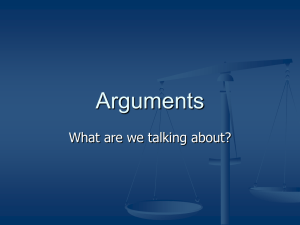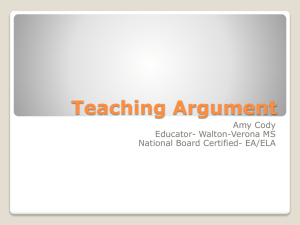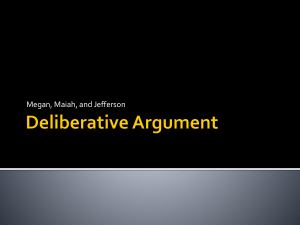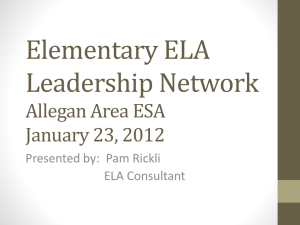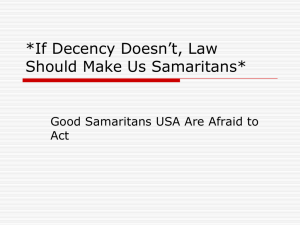Classical argument classargument
advertisement
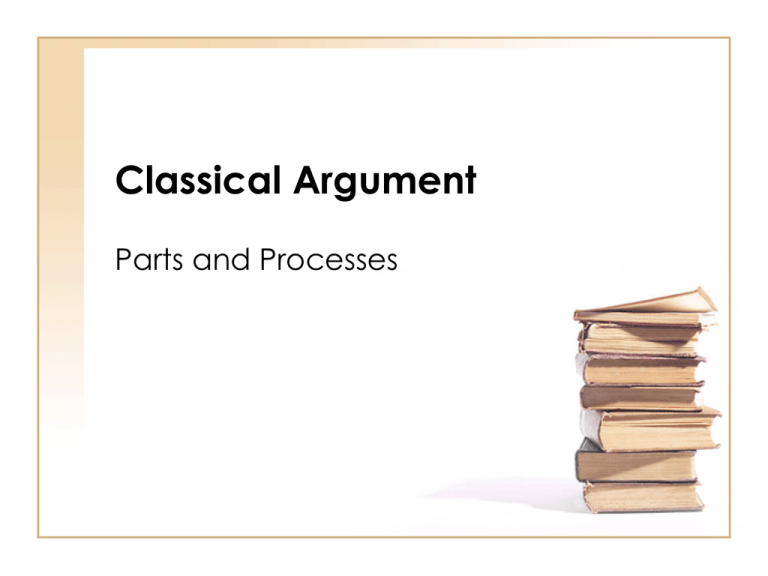
Classical Argument Parts and Processes What is it? • One of the oldest known forms for making an argument (Greeks, 5th century BC) • A series of steps to make sure you’ve covered everything you need to build a solid argument. • Does not guarantee a perfect argument, but can help give your paper structure and make sure you’ve covered your bases. Five-part Process • Introduction – Lead-in to your argument, establishes connection to the topic and states theme/thesis. • Narration – Presents the topic more fully, provides needed background information, and establishes necessity/what’s at stake. • Confirmation – Provides your claims and evidence in support of your side of the argument. Five-part Process (cont’d) • Concession and Refutation – Concedes valid points of the opposition (as much as possible without damaging thesis) and offers refutations to arguments for the other side. • Conclusion – Wraps up argument, summarizes points, and strengthens the argument with a final plea or reinforcement of points made. Introduction/Narration • Two parts often run together in writing. • Attracts interest to the subject. (Audience) • Provides necessary background on general and specific topics. (Animal testing/medical) • Establishes your position on the argument (thesis statement). • Establishes your role – your relationship to the argument, why it matters, and the tone you will be using (aggressive, caring, passionate…angry?) Questions for Introduction/Narration • What’s the situation the argument responds to? • What background/context is needed? • What are the principal issues involved? • Have I established my stance? • How do I get the audience’s attention? • What tone do I want to establish? • What image of myself do I want to project? Confirmation – Backing It Up • Parental approach doesn’t work (i.e., Because I said so!) • Provides various support for your side of the argument. – Facts – Examples – Personal experience • Shows how this support is actually connected to thesis. Questions for Confirmation • What are the arguments that are most likely to appeal to my audience? Which ones won’t work for them? • How can I show they are valid arguments? • What kinds of inartistic proofs will work for them? • Where can I find facts/testimony to back it up? • What kind of artistic proofs are most likely to be effective? Concession • Give a little – but not too much. • There is always some common ground – find it. • Shows that you are considering both sides – gives balance. Refutation • Counters the opposition arguments. • Four strategies: – Show they are incorrect/wrong using facts. – Show the limits of the argument (situational). – Show that other considerations outweigh their points. – Show logical fallacies in their argument. (pg. 40-42) Questions for Concession/Refutation • What are the most important opposing arguments? • How much can I concede without weakening my argument? • What is the best way to refute opposition arguments? • What are possible objections to/ misunderstandings of my opinion? How can I deal with them? Conclusion • Often the hardest part to write effectively. • Step back a little – look at the whole again. • Show why a solution to the argument is important, and why yours is the best. • Show the possible benefits of accepting your solution/side. • Don’t leave them hanging – last chance to leave an impression. • Don’t just restate. Questions for Conclusion • How can I best leave a strong final impression of rightness/importance? • How can I best summarize/exemplify my most important arguments? • What is the larger significance of my argument? • What are the long-range implications? • How can I bring things full circle and leave my audience satisfied? The End PowerPoint by William Folden Adapted from web presentation by Dr. Josephine Koster of material from Real Writing (2nd Edition) by Walter Beale (1986).



